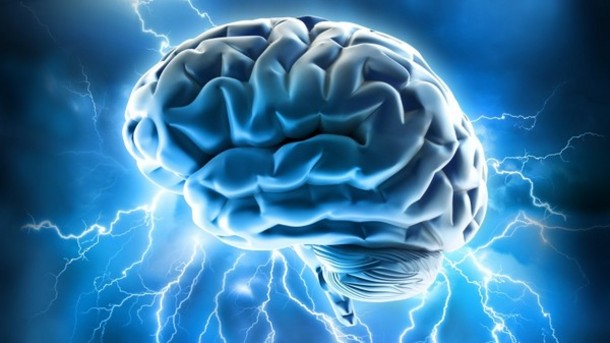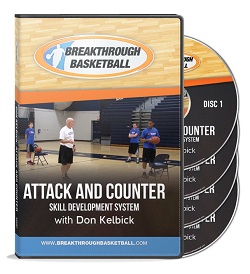How To Make "Less Intelligent Players" Look Smart
 |
As a basketball coach, we always want players that make the right decision at the right time.
However, how many times have you run into situations where it's nearly impossible to improve the decision-making of certain players or even your entire team?
I'm sure you know all too well... when you have these "less intelligent players", it can completely ruin your team's ability to succeed.
Well, we think we have something that can solve these problems for you... but first, we need to address a few issues to fully understand why some players look "less intelligent" on the basketball floor.
That way, the solutions make more sense.
Why Reaction Time Could Be a Big Reason Some Players Never "Get It"
Reaction time is how long it takes you to react to a stimulus.
However, reaction time is correlated to genetics and can only be improved minimally.
If you don't believe me, practice the test below in a focused state without cheating; tell me how much you improve from your 100th repetition to your 1,000th repetition. I bet you improve 10% to 20% at best as long as you're in the same mental and physical state.
Here is the simple reaction test that you can do: http://getyourwebsitehere.com/jswb/rttest01.html
If you average under 0.2 seconds over multiple trials, that is excellent.
0.2 to 0.3 seconds is average.
0.3 seconds and above is slow.
World-class athletes tend to have very quick reaction times.
Your ability to QUICKLY make a decision has a ceiling based on your reaction time.
No matter how well you recognize a pattern or know the solution, you are going to be slower than other athletes if you have a slow reaction time.
I believe this is part of the reason why some players never "get it".
By the time you make the decision... the opportunity is GONE.
If this wasn't genetic, why haven't there been more players like... Magic Johnson, Steve Nash, Pistol Pete, and Chris Paul?
How The "Paradox of Choice" Can Lead To Poor Performance
I'm sure most of you have experienced a situation where there are so many choices that you can't make a decision.
Where do you eat?
What car do you buy?
What suit or dress should you pick out?
Where do you invest your money?
What toothpaste do you choose?
What jelly or jam do you pick at the grocery store?
Barry Schwartz has done research on this topic and coined the phrase the "paradox of choice." You've also heard us refer to something similar "paralysis analysis" in many of our past articles.
The same thing happens in basketball.
Do you shoot? Do you attack the rim? Do you pull up for a jump shot? Do you jab step? Do you use a pass fake? Do you pass the ball into the post? Do you pass the ball to the player cutting? Do you throw the alley-oop? Do you try to take your defender off the dribble? Do you pull the ball out and set up a play?
So many choices!
And often this leads to less assertive, indecisive players which end up with poor results... and this issue is compounded even more if they don't have the innate ability to quickly react to the situation.
This is the second reason why players can be slower in their decision-making.
The Solution To Make Your Players "Smarter", More Assertive, and More Effective
So how do you compete against players with reaction times quicker than you? How do you eliminate indecisiveness to speed up the decision-making process?
The solution to these problems is the idea of Mapping. Don Kelbick first taught this to me over a decade ago.
It's quite simple, very easy to teach, and extremely effective.
In most cases, you get results right away.
When you catch the ball, do Option A.
If the defense takes away Option A, do Option B.
If the defense takes away Option B, do Option C.
Mapping In Action...
While this can be applied to most situations on the court, let's take a situation where you catch the ball at the top of the key.
If you catch the ball in shooting range...
Option A – Shoot the ball.
If the defense takes away shot...
Option B – Drive for the lay up.
If the defense collapses in the lane...
Option C – Pull up for jump shot.
If the shot is not open...
Option D – Pass the ball.
If you have a player that has less success attacking the rim, you may eliminate Option B for that individual.
If you have a player that doesn't dribble very well, you may eliminate Option B & C.
By eliminating the dozens of possible decisions and mapping the decision-making, you end up with players that make quicker decisions and look smarter by making better basketball plays.
In addition, your players are more assertive, more confident, and just plain better.
Now this helps you compete against better competition.
Analytical Example...
For our analytical friends, here is an example.
Player A has a quick reaction time and is taught traditionally.
Player B has a slower reaction time, is also taught traditionally, and has an added level of indecisiveness.
Player A
Pattern Recognition - 0.4 Seconds
Reaction Time - 0.15 Seconds
Total Time - 0.55 Seconds
Player B
Pattern Recognition - 0.4 Seconds
Reaction Time - 0.3 Seconds
Indecisiveness - 0.4 Seconds
Total Time - 1.1 Seconds
As you can see, due to a slower reaction time caused by genetics and the "paradox of choice" (or paralysis analysis or indecisiveness), Player B can take twice as long to take action on the basketball floor.
That's a lifetime on the basketball floor and can make a skilled player look very bad.
So now, let's pretend that we're using Mapping to reduce pattern recognition due to fewer choices and completely eliminate indecisiveness.
Player B Pattern Recognition - 0.25 Seconds Reaction Time - 0.3 Seconds Total Time - 0.55 Seconds
Now Player B is on the same level as Player A who had superior reaction times.
While the times aren't meant to be exact, this gives you a quantitative look to how mapping and eliminating indecisiveness can improve your player's ability to make decisions quicker. Thus, becoming a better player.
Learn More About Developing Better Players and How To Teach It – Risk Free!

While there is certainly a lot more to this teaching method, you can see how Don Kelbick built his Attack and Counter Skill Development System from the ground up.
The great thing about the video is that he teaches it to players who have never been taught the system so you get to see all of the coaching details that you could implement with your team.
And we offer 100% Money-Back Guarantee, so you don't have to worry about whether you like it or not.
Click Here and scroll down to order or read more.
|
|||


 Facebook (145k Followers)
Facebook (145k Followers) YouTube (152k Subscribers)
YouTube (152k Subscribers) Twitter (33k Followers)
Twitter (33k Followers) Q&A Forum
Q&A Forum Podcasts
Podcasts